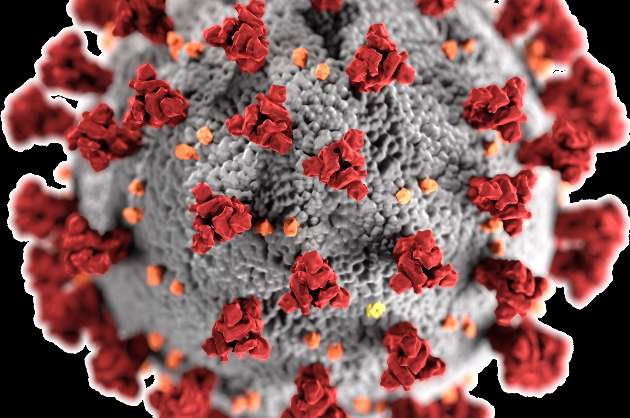Anupama Nair
It is more than two years now, we’ve been hearing the word Pandemic and a mere ‘virus’, that originated from China is holding the world hostage. The killer Virus Corona, affected millions and killed many more. So, I thought let me do a research on the Pandemics over the years and how they impacted the world. Before Corona, there are many Pandemics that almost wiped the entire human population. Fasten your seat belts, I am taking you on a time travel, many millenniums ago.
What is a Pandemic? In the kingdom of infectious diseases, a pandemic is the worst- case scenario. When an epidemic spreads beyond a nation’s borders, that’s when the disease officially becomes a pandemic. Intermittent outbreaks of infectious diseases have had profound and lasting effects on societies throughout history. Those events have powerfully shaped the economic, political, and social aspects of human civilization, with their effects often lasting for centuries. Epidemic outbreaks have defined some of the basic tenets of modern medicine, pushing the scientific community to develop principles of epidemiology, prevention, immunization, and antimicrobial treatments.
In a long succession throughout history, pandemic outbreaks have decimated societies, determined outcomes of wars, wiped out entire populations, but also, paradoxically, cleared the way for innovations and advances in science (including medicine and public health), economy, and political systems. Pandemic outbreaks, or plagues in the ancient history, as they are often referred to, have been closely examined in the realm of history, including the history of medicine. In the era of modern world, plague is however not such a killer pandemic as other diseases.
As civilizations spread, so did pandemics, some of which decimated millions of lives. Communicable diseases existed even during the time of “early men” and when man were hunters, but the shift to agrarian life nearly ten thousand years ago created communities that made epidemics more possible. Malaria, tuberculosis, leprosy, influenza, and smallpox were major diseases during this period.
The first recorded epidemic was in China the birth place of Corona too. Around 5000 years ago, an epidemic wiped out a pre-historic village in China. It is said that the bodies of the dead were stuffed inside a house that was later burned down. No age group was spared, as the skeletons of juveniles, young adults and middle-aged were found inside the house. The site is now called "Hamin Mangha" and is one of the best-preserved pre-historic sites in northeastern China. Before the discovery of “Hamin Mangha”, another pre-historic mass burial site was discovered, believed to be of the same period called “Miaozigou”, in northeastern China. These discoveries prove that an epidemic ravaged the entire region.
Greece was the next venue. In 430 B.C., just before the war between Athens and Sparta began, an epidemic ravaged the people of Athens and lasted for five years. Reports stated around one hundred thousand people lost their lives. The Greek historian Thucydides wrote that "people in good health were all of a sudden attacked by violent heats in the head, and redness and inflammation in the eyes, the inward parts, such as the throat or tongue, becoming bloody and emitting an unnatural and fetid breath". There are varied causes for the epidemic, some scientists say typhoid, while others say it was Ebola. Many scholars believed that overcrowding due to the war worsened the epidemic. Spartan army was stronger, thereby forcing the Athenians to take refuge behind a series of fortifications called the "long walls" that protected their city. Despite the epidemic, the war continued till Athens was conceded defeat to Sparta.
Let us now travel to Rome. It was another outbreak that occurred a couple of centuries later that was documented and recorded by contemporary physicians of the time. It was the first recorded Pandemic, which affected many countries. The outbreak was known as the Antonine Plague of 165–180 AD. The Antonine plague occurred in the Roman Empire during the reign of Marcus Aurelius (161–180 A.D.) and the cause is thought to be smallpox.
The disease was brought into the Roman Empire by soldiers returning from Seleucia (now in Turkey), and before it declined, it had impacted Asia Minor, Egypt, Greece, and Italy. Unlike the plague of Athens, which affected a limited area, the Antonine plague spread across the vast territory of the great Roman Empire.
Egypt is the next place to visit. First appearing in Egypt, the plague called Justinian plague spread through Palestine and the Byzantine Empire, and then throughout the Mediterranean region. The plague changed the course of the Roman Empire. The emperor Justinian's dream to bring the Roman Empire back together was crushed and as it caused massive economic problems. Recurrences over the next two centuries eventually killed about fifty million people, which was roughly twenty six percent of the world population. It is believed to be the first significant appearance of the bubonic plague, which is spread by rats and fleas.
Leprosy, though a killer disease for many centuries, it grew into a pandemic in Europe in the Middle Ages, resulting in the building of numerous leprosy-related hospitals to treat the large number of patients. Leprosy was caused due to a slow-developing bacterial disease that causes sores and deformities. Leprosy was believed to be a punishment from God and this belief led to moral judgments and ostracization of victims.
A plague attack (1709-1713) followed the Great Northern War (1700–1721), between Sweden and the Tsar of Russia and its allies, killing about one hundred thousand in Sweden, and three hundred thousand in Prussia. However, the good news was that this was the last plague in Scandinavia, but the one hundred thousand Russians succumbed to plague of 1770–1772.
The Great Plague of Marseille (France) was the last major outbreak of bubonic plague in western Europe. In 1720, the disease killed a total of one hundred thousand people. Fifty thousand people were killed in Marseille alone, and during the next two years and another fifty thousand in the north. How did it occur? On the fateful day i.e., May 25, 1720, a ship named the Grand Saint-Antoine arrived in the port of Marseille, France, laden with cotton, fine silks, and other goods. The ship carried an invisible cargo the bacteria known as “Yersinia pestis”, and brought about the Great Plague of Provence, the last major outbreak of bubonic plague in Europe.
Then a series of Cholera Pandemics hit the world. The seven cholera pandemics lasted over the next 150 years. The first wave originated in Russia, in 1817, where about one million people died due to infection of the small intestine. Spreading through feces-infected water and food, the British soldiers carried the bacterium to India where million more people died. Where ever they traveled due to the Empire, its navy spread cholera to the rest of the countries like Spain, South Africa, Indonesia, China, Japan, Italy, Germany and United States of America, where it killed nearly two million people. A vaccine was created in 1885, but pandemic continued without abating.
The world had just started recovering from the casualties – human lives, property, economy, when a tragedy struck again, this time from another deadly Pandemic. The Spanish Flu, also known as the 1918 Influenza Pandemic, was an unusually deadly caused by the H1N1 (a virus similar to Corona). This virus lasted from February 1918 to April 1920 and infected 500 million people – about one-third of the world's population at the time, in four successive waves. The death toll is estimated to have been somewhere between twenty million and fifty million, while some reports claim one hundred million. Most of the casualties were reported in the United States with fifty million people and nearly seventeen million people died in India alone. Is Covid 19 going on the same path as US has most Corona casualties followed by India? The infection originated in Kansas (USA) and spread to France, Germany and United Kingdom. In India, the British soldiers carried it, when they came home after the War. The Flu claimed the lives of young people. Some analyses have shown the virus to be particularly deadly because it triggered a cytokine storm, which ravaged the stronger immune system of young adults.
Smallpox was once considered a deadly disease and plagued the human race for more than two thousand years was diagnosed in 1977 in Somalia. Starting with twenty-year vaccination program it was finally eradicated from the world. The elimination of the disease, that was considered fatal could be eradicated by US—Russia cooperation during the Cold War. The vaccination helped in controlling diseases such as polio, measles, diphtheria and whooping cough.
If all these diseases weren’t enough there were more to come as we the people discover A new disease conquered the world in 1981, called Acquired Immunodeficiency Syndrome or AIDS caused by Human Immunodeficiency Virus or HIV. By the millennium it killed millions in United States. In 1996, the United Nations established UNAIDS to co-ordinate global action. By then infection spread to Africa. Today, nearly forty million people suffer from AIDS and nearly 10 million people died globally.
The Severe Acute Respiratory Syndrome (SARS) a strain of corona virus caused destruction around the world in 2002–2003. Again, China was the birth place of SARS too. The symptoms were shortness of breath, and coughing. SARS spread all around the word. It affected more than eight thousand people. Like Corona, China tried to suppress the news of the virus. Infection spread to humans due to civet cats. A new influenza virus, a strain of H1N1 called Swine Flu in 2009 again was severe. Swine Flu spread due to infections in pigs. From China, it spread to Mexico and United States. Nearly five million people lost their lives.
SARS- COV2 (corona virus) originated in bats in the Middle East. It transmitted into humans in Wuhan’s (China) open wet meat markets. Gradually the virus spread to the whole world killing millions in its wake, destroying lives and livelihoods etc. It is surprising to hear that this virus was discovered in 1965 and called B814. Corona or Covid 19 was many times more deadly than SARS infection of 2002-2003. More than 500 million people were affected and three million lost their lives and the list goes on… The US has nearly 80 million cases with around 9 hundred thousand people died, followed by India with 40 million cases and 5 hundred thousand deaths. Others are not far behind. Brazil, France, Turkey, Russia and United Kingdom are in the race.
Is it a curse that from 1720, the world has been witnessing such killer pandemics every hundred years? The Great Plague (1720-1723), killed one hundred thousand people worldwide. The Cholera Pandemic (1820-1824) killed millions in Asia. In 1920 after the First World War, the Spanish Flu killed nearly 17 million people. Come circa 2020, Corona Virus had killed nearly 3 million people and the list goes on and on. According to historians, “pandemics like COVID-19 strike with eerie precision, every 100 years: 1720 — Plague; 1820 — Cholera outbreak; 1920 — Spanish flu; 2020 — Chinese coronavirus. What’s happening? There is a theory that every 100 years, a pandemic happens. At first glance, nothing seems strange, but the accuracy with which these events take place is scary.”
Looking at the history of Pandemics occurring from time immemorial, haven’t we learnt any lessons? Is not time to ensure that such Pandemics do not wipe away the human race? All we can do is to ensure “prevention is better than cure” and control the corona virus and other such viruses in future. We can surely try for the world to be a better place. All countries of the world forgetting wars and enmity need to help each other. India showed the way by distributing free vaccine to eighty countries, following the principle of “vasudaiva kudumbakam” and “loka samastha sukino bhavanthu”. When the second wave was severe in India, many other countries reciprocated by sending vaccines and oxygen. This is way to go forward.
Will we see any more Pandemics? That is the moot pont!




























